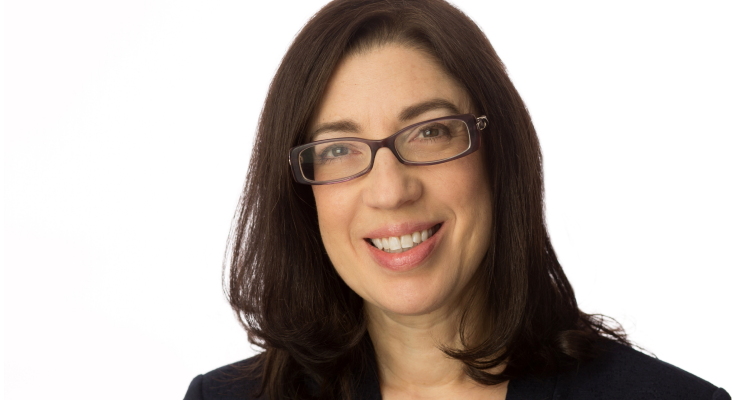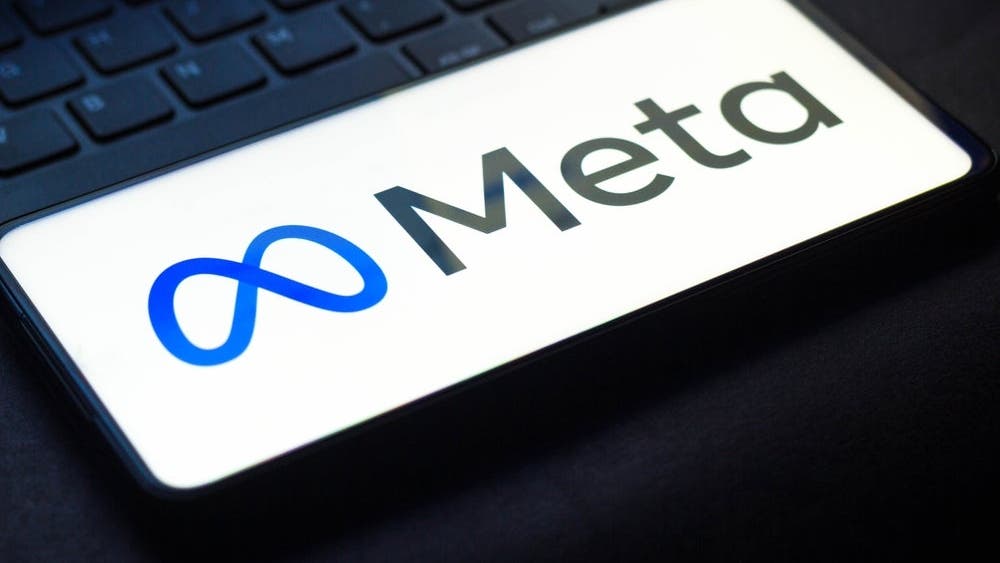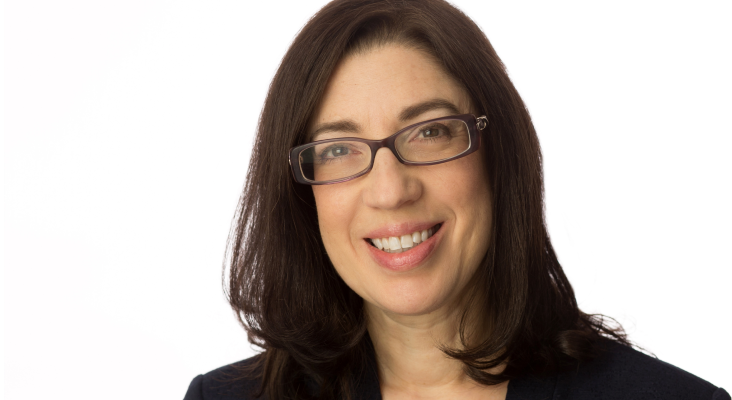CryptoCurrency
Ask an Advisor: I’m Facing a Massive Tax Bill from Investment Gains

My investment accounts don’t withhold taxes from my capital gains, which is causing me to owe large amounts when I file my returns. How can I mitigate this situation?
-David
As capital gains distributions are unpredictable and usually unknown until the end of the year, it can be difficult to properly plan for them. Taking proactive steps to anticipate and “prepay” your tax bill can help you avoid an unmanageable balance due in April.
Read on for more information on how to manage your tax liability throughout the year. (Looking for help with a financial question? This tool can help match you with potential advisors.)
Options to ‘Prepay’ Your Tax Bill
You have two main options for paying taxes throughout the year rather than dealing with a huge tax bill in April: adding or increasing withholding taxes from another income source, or making quarterly estimated tax payments.
A third possible option would be to contact the mutual fund generating the capital gains distributions directly and ask it about withholding. It’s possible that the company would facilitate that but not likely. As for your investment account, those institutions typically only offer withholding when you sell securities or take retirement account distributions.
Be aware that using these strategies will reduce the balance you have to pay when you file your taxes. But they won’t reduce your actual tax bill. (Looking for help with a financial question? This tool can help match you with potential advisors.)
What Are Capital Gains Distributions?
Mutual funds and exchange-traded funds (ETFs) hold lots of underlying investments like stocks and bonds. During the year, they may sell some of those investments, resulting in capital gains or losses inside the fund. At the end of the year, the fund distributes a proportional share of those sale proceeds to each investor – that’s a capital gains distribution.
As an investor, you generally won’t know what to expect in terms of capital gain distribution income until late in the year. Funds typically post information about estimated distributions and expected payout dates on their websites in November or December.
Unlike regular capital gains, which come into play when you sell an investment for more than its purchase price, you haven’t taken any action here. Your capital gains distribution is purely the result of trades that the fund itself made. So even though you haven’t sold any shares of your mutual fund, you’ll have taxable income from those capital gains distributions.
This income will be taxed like long-term capital gains, no matter how long you’ve actually owned your fund shares. Long-term capital gains tax rates are based on your overall taxable income and filing status, so this income will be taxed at either 0%, 15% or 20%.
How Can I Deal With These Taxes?
Since you won’t know until late in the year how much you might receive in capital gains distributions, it can be tough to estimate the tax bill exactly – but you can get close enough to at least avoid IRS underpayment penalties. The IRS has safe harbor guidelines: As long as you pay at least 90% of your current tax bill or 100% of the prior year’s tax bill, or owe less than $1,000, you can avoid being charged underpayment penalties even if you end up owing.
Both methods ask you to have a good sense of what your annual income will be early in the year, which isn’t always practical. You can start with your best estimate and make adjustments during the year if needed. (Looking for help with a financial question? This tool can help match you with potential advisors.)
Begin or Increase Withholding on Other Income
If you have other income sources, such as a regular W-2 job or federal retirement income, you can request that they enough withhold taxes to cover this additional income. You can even request withholding on Social Security payments.
If you have an online account for your other income source, you can probably request or change withholding taxes right there. You’ll complete a Form W-4 (or the equivalent) and enter the amount you want withheld on the line that says “extra withholding.” For government payments like Social Security, you’ll use Form W-4V and choose the percent you want withheld. You can also stop this withholding at any time by updating your choices.
Make Quarterly Estimated Tax Payments
Once you know approximately how much tax you’ll owe, you can divide that by four and make equal estimated tax payments every quarter. You can either complete IRS Form 1040-ES and mail that with a check to your designated IRS mailing center or make your payment online at the IRS website. If you pay online, make sure you choose “Estimated Tax” for the reason and the correct current tax year.
Pro tip: When making estimated tax payments for a jointly filed tax return, make sure to use the Social Security number of whichever of you appears first on the tax return (as “taxpayer” rather than as “spouse”). The IRS system sometimes misapplies or does not apply payments properly if the other SSN is used.
Estimated tax due date payments are:
Estimated Tax Payments vs. Withholding Taxes
Be aware that there are more potential penalties associated with estimated tax payments than withholding taxes. It’s also a lot easier to manage withholding as you can set it and forget it, as opposed to remembering to proactively make a payment every quarter. (Looking for help with a financial question? This tool can help match you with potential advisors.)
Next Steps
There are two ways to avoid paying a large tax bill in April. You can withhold extra taxes on another source of income or make quarterly estimated tax payments. Either way, you’ll be spreading out your taxes over the whole year instead of coming up with a lump sum when you file your tax return.
Find a Financial Advisor
-
If you have questions specific to your investing and taxation situation, a financial advisor can help. Finding a financial advisor doesn’t have to be hard. SmartAsset’s free tool matches you with up to three vetted financial advisors who serve your area, and you can interview your advisor matches at no cost to decide which one is right for you. If you’re ready to find an advisor who can help you achieve your financial goals, get started now.
-
Understanding your tax bill can help you make plans for your money. Whether you plan on saving for retirement, paying off college or credit card debt, or investing your money differently, SmartAsset’s tax return calculator can help you figure out how much you will get back from the government so you can plan ahead.
-
Keep an emergency fund on hand in case you run into unexpected expenses. An emergency fund should be liquid — in an account that isn’t at risk of significant fluctuation like the stock market. The tradeoff is that the value of liquid cash can be eroded by inflation. But a high-interest account allows you to earn compound interest. Compare savings accounts from these banks.
-
Are you a financial advisor looking to grow your business? SmartAsset AMP helps advisors connect with leads and offers marketing automation solutions so you can spend more time making conversions. Learn more about SmartAsset AMP.
Michele Cagan, CPA, is a SmartAsset financial planning columnist and answers reader questions on personal finance and tax topics. Got a question you’d like answered? Email AskAnAdvisor@smartasset.com and your question may be answered in a future column.
Please note that Michele is not a participant in the SmartAsset AMP platform, is not an employee of SmartAsset, and she has been compensated for this article.
Photo credits: ©iStock.com/Milan_Jovic, ©iStock.com/AmnajKhetsamtip
The post Ask an Advisor: ‘How Can I Mitigate This Situation?’ My Tax Bill Is Huge Because My Investment Accounts Don’t Withhold Capital Gains appeared first on SmartAsset Blog.
CryptoCurrency
Do millionaires keep their money in checking accounts?

The habits of millionaires are a topic of interest when it comes to financial advice. After all, unless they received a large chunk of money as an inheritance or gift, most millionaires had to be smart with their money to get where they are.
Learning how millionaires accumulate wealth — and where they keep it — can provide valuable insights for anyone focused on growing their money. One common question is whether or not millionaires keep money in checking accounts.
Studies show that in recent years, millionaires are keeping a significant portion of their wealth in cash. According to CNBC’s , that portion was about 24% in 2023. While this doesn’t necessarily mean a quarter of a millionaire’s wealth is sitting in a checking account, it does indicate the importance of maintaining liquid assets. And a checking account can be a helpful tool for doing so — whether or not you’re a millionaire.
Anyone, regardless of net worth, can find value in a checking account. Checking accounts allow unlimited deposits and withdrawals, check writing, bill pay, and other features to help you manage your money day-to-day.
While millionaires may keep large portions of their wealth in other deposit accounts and investments, some may use a checking account to manage daily spending. Millionaires also recognize the importance of having liquid assets, like funds in checking and savings accounts. Accessible cash lets you cover unexpected expenses without needing to sell off investments, borrow money, or pay a penalty for tapping your retirement savings early.
The amount of money a millionaire keeps in their checking account is highly personal and depends on preference. However, because checking accounts rarely earn competitive — if any — interest, some millionaires intentionally limit their checking account balance. Some may choose to keep the bare minimum, such as a couple of months’ worth of essential expenses, in their checking accounts, keeping the rest of their wealth in more lucrative assets.
Regardless of preference, it would be surprising for a millionaire to keep more than $250,000 in a single checking account. That’s because the Federal Deposit Insurance Corp. (FDIC) only insures up to $250,000 in deposits per institution, per account holder.
While millionaires may use checking accounts for day-to-day financial transactions, they may also use some of the following accounts in addition to, or in place of, a checking account:
-
Savings accounts: Like checking accounts, savings accounts provide a high degree of liquidity, allowing you to access your money as needed for regular or unexpected expenses. High-yield savings accounts, in particular, give millionaires an extra bang for their buck. Some of the best accounts currently offer rates upwards of 4% versus the national average savings account rate of 0.46%.
-
Cash management accounts: Cash management accounts (CMAs) pay competitive interest rates while maintaining more accessibility than a savings account. Some CMAs come with a debit card and ATM access, and many provide extended FDIC coverage limits by “sweeping” additional deposits into partner banks. CMAs are available at brokerages, not banks, facilitating easy transfers between investment and cash accounts.
-
Money market accounts: Similar to CMAs, money market accounts combine features of checking and savings accounts, often paying competitive interest rates and providing check writing and ATM access. Banks and credit unions offer these accounts, which are federally insured. Minimum opening deposit and minimum balance requirements are often higher than those for standard savings accounts.
-
Retirement and tax-advantaged accounts: Millionaires understand the importance of investing for their later years, and retirement accounts such as 401(k)s and IRAs allow them to do so in a tax-advantaged way. Some retirement accounts, like 401(k)s, are offered by certain employers. Others, such as traditional and Roth IRAs, are available to anyone.
-
Brokerage accounts: The IRS limits contributions to tax-advantaged accounts, and millionaires typically invest beyond these limits. They do so with taxable brokerage accounts, which can hold investments such as stocks, bonds, and mutual funds without contribution limits.
-
Other investments, like real estate, commodities, and art: Some millionaires may decide to diversify their portfolio with other investment types. These could include real estate investments, such as investment properties or real estate investment trusts (REITs); commodities, such as metals or energy products; art; and more.
The amount of money millionaires keep in their checking accounts depends on personal preference. While some millionaires may keep six figures in their checking account to maintain a comfortable cash cushion, others may choose to keep the bare minimum in checking. You wouldn’t expect millionaires to keep more than $250,000 in a checking account, however, because balances over this threshold aren’t typically insured.
There’s no single bank that’s a favorite among millionaires; it’s another matter of preference. However, millionaires are likely to bank with institutions that offer private banking to those who meet specific financial requirements. Private banking may include wealth planning services, waived fees, dedicated bankers, and additional perks. J.P. Morgan Private Bank, Citi Private Bank, and Bank of America Private Bank are among some of the most popular banks for millionaires.
Billionaires may have checking accounts, but they likely use accounts that cater to ultra-high-net-worth individuals. These accounts may come with perks such as a dedicated banker, waived fees, and competitive interest rates. Alternatively, billionaires may opt for a cash management account with higher FDIC insurance coverage limits and checking account features.
No rule says you can’t have a million dollars in a checking account, but FDIC insurance typically only covers up to $250,000. Plus, you can get a bigger return on your investment by keeping $1 million elsewhere. One alternative is a cash management account, which acts like a checking account but generally earns higher interest. Plus, many cash management accounts insure more than the standard $250,000 by sweeping funds into multiple partner banks.
CryptoCurrency
Lumen And Meta Join Forces To Boost AI With Flexible, On-Demand Network Solutions


Lumen Technologies, Inc. (NYSE:LUMN) shares are trading higher on Monday after the company announced it is partnering with Meta Platforms, Inc. (NASDAQ:META) to significantly increase Meta’s network capacity and help drive its AI ambitions.
Lumen’s partnership offers Meta enhanced flexibility with secure, on-demand bandwidth, supporting its complex computing requirements and enabling it to serve billions daily.
Ashley Haynes-Gaspar, Lumen’s EVP and chief revenue officer, said, “We’ve transformed our company to meet this demand. As Meta’s customers use more AI services across its platforms, we’re helping provide Meta with a seamless, effortless, and flexible network that will meet its growing needs.”
Lumen Technologies said its Private Connectivity Fabric enables long-term network capacity for Meta’s AI.
Alex-Handrah Aimé, director of Meta’s Network Investments stated, “Our AI tools are performing increasingly more complex tasks including enabling conversations in a variety of languages and translating text to images in real time, while helping people interact with the world around them in new, immersive ways.”
Lumen will report third quarter 2024 results on November 5, 2024.
Investors can gain exposure to the stock via Invesco S&P SmallCap Utilities & Communication Services ETF (NASDAQ:PSCU) and First Trust Cloud Computing ETF (NASDAQ:SKYY).
Price Action: LUMN shares are up 9.50% at $7.38 at the last check Monday.
Image via Shutterstock
Read Next:
UNLOCKED: 5 NEW TRADES EVERY WEEK. Click now to get top trade ideas daily, plus unlimited access to cutting-edge tools and strategies to gain an edge in the markets.
Get the latest stock analysis from Benzinga?
This article Lumen And Meta Join Forces To Boost AI With Flexible, On-Demand Network Solutions originally appeared on Benzinga.com
© 2024 Benzinga.com. Benzinga does not provide investment advice. All rights reserved.
CryptoCurrency
US election optimism fuels $2.2B inflows in crypto products


CoinShares said the United States and Bitcoin led crypto investment product dynamics last week amid growing optimism over a potential Republican election win in the US.
CryptoCurrency
Quantum computer ‘threat’ to crypto is exaggerated — for now


Bitcoin’s private keys won’t be breached any time soon, but the industry still needs to transition to “post-quantum cryptography.”
CryptoCurrency
European investors pour record $105B into US Bitcoin ETFs


Despite record European inflows, Bitcoin has been unable to recover above the $70,000 psychological level since July.
CryptoCurrency
ApeCoin (APE) price jumps 100% on ApeChain launch


Apechain mainnet launch and LayerZero’s integration translated to 100% price upside for APE in recent days.
-

 Science & Environment1 month ago
Science & Environment1 month agoHyperelastic gel is one of the stretchiest materials known to science
-

 Technology4 weeks ago
Technology4 weeks agoIs sharing your smartphone PIN part of a healthy relationship?
-

 Science & Environment1 month ago
Science & Environment1 month ago‘Running of the bulls’ festival crowds move like charged particles
-

 Science & Environment1 month ago
Science & Environment1 month agoHow to unsnarl a tangle of threads, according to physics
-

 Science & Environment1 month ago
Science & Environment1 month agoMaxwell’s demon charges quantum batteries inside of a quantum computer
-

 Technology1 month ago
Technology1 month agoWould-be reality TV contestants ‘not looking real’
-

 Science & Environment4 weeks ago
Science & Environment4 weeks agoX-rays reveal half-billion-year-old insect ancestor
-

 Science & Environment1 month ago
Science & Environment1 month agoSunlight-trapping device can generate temperatures over 1000°C
-

 Science & Environment1 month ago
Science & Environment1 month agoLiquid crystals could improve quantum communication devices
-

 Science & Environment1 month ago
Science & Environment1 month agoQuantum ‘supersolid’ matter stirred using magnets
-

 Womens Workouts4 weeks ago
Womens Workouts4 weeks ago3 Day Full Body Women’s Dumbbell Only Workout
-

 Technology3 weeks ago
Technology3 weeks agoUkraine is using AI to manage the removal of Russian landmines
-

 TV3 weeks ago
TV3 weeks agoসারাদেশে দিনব্যাপী বৃষ্টির পূর্বাভাস; সমুদ্রবন্দরে ৩ নম্বর সংকেত | Weather Today | Jamuna TV
-

 Science & Environment1 month ago
Science & Environment1 month agoLaser helps turn an electron into a coil of mass and charge
-

 Science & Environment1 month ago
Science & Environment1 month agoWhy this is a golden age for life to thrive across the universe
-

 Science & Environment1 month ago
Science & Environment1 month agoA new kind of experiment at the Large Hadron Collider could unravel quantum reality
-

 Science & Environment1 month ago
Science & Environment1 month agoQuantum forces used to automatically assemble tiny device
-

 Science & Environment1 month ago
Science & Environment1 month agoA slight curve helps rocks make the biggest splash
-

 Science & Environment1 month ago
Science & Environment1 month agoNerve fibres in the brain could generate quantum entanglement
-

 Science & Environment1 month ago
Science & Environment1 month agoHow to wrap your mind around the real multiverse
-

 Football3 weeks ago
Football3 weeks agoRangers & Celtic ready for first SWPL derby showdown
-
Business3 weeks ago
DoJ accuses Donald Trump of ‘private criminal effort’ to overturn 2020 election
-

 News3 weeks ago
News3 weeks agoMassive blasts in Beirut after renewed Israeli air strikes
-

 Business3 weeks ago
Business3 weeks agoWhen to tip and when not to tip
-

 News2 weeks ago
News2 weeks agoNavigating the News Void: Opportunities for Revitalization
-

 News1 month ago
News1 month ago▶️ Hamas in the West Bank: Rising Support and Deadly Attacks You Might Not Know About
-

 Science & Environment1 month ago
Science & Environment1 month agoITER: Is the world’s biggest fusion experiment dead after new delay to 2035?
-

 MMA3 weeks ago
MMA3 weeks agoJulianna Peña trashes Raquel Pennington’s behavior as champ
-

 Science & Environment1 month ago
Science & Environment1 month agoTime travel sci-fi novel is a rip-roaringly good thought experiment
-

 News1 month ago
News1 month ago▶️ Media Bias: How They Spin Attack on Hezbollah and Ignore the Reality
-

 Science & Environment1 month ago
Science & Environment1 month agoNuclear fusion experiment overcomes two key operating hurdles
-

 Science & Environment1 month ago
Science & Environment1 month agoPhysicists have worked out how to melt any material
-
News1 month ago
the pick of new debut fiction
-

 News1 month ago
News1 month agoOur millionaire neighbour blocks us from using public footpath & screams at us in street.. it’s like living in a WARZONE – WordupNews
-

 Technology3 weeks ago
Technology3 weeks agoSamsung Passkeys will work with Samsung’s smart home devices
-

 News2 weeks ago
News2 weeks ago▶ Hamas Spent $1B on Tunnels Instead of Investing in a Future for Gaza’s People
-

 Sport3 weeks ago
Sport3 weeks agoWales fall to second loss of WXV against Italy
-

 Technology3 weeks ago
Technology3 weeks agoMicrophone made of atom-thick graphene could be used in smartphones
-

 MMA3 weeks ago
MMA3 weeks agoPereira vs. Rountree prediction: Champ chases legend status
-

 Sport3 weeks ago
Sport3 weeks agoBoxing: World champion Nick Ball set for Liverpool homecoming against Ronny Rios
-

 MMA2 weeks ago
MMA2 weeks ago‘Uncrowned queen’ Kayla Harrison tastes blood, wants UFC title run
-

 Technology1 month ago
Technology1 month agoMeta has a major opportunity to win the AI hardware race
-

 Technology4 weeks ago
Technology4 weeks agoWhy Machines Learn: A clever primer makes sense of what makes AI possible
-

 Sport3 weeks ago
Sport3 weeks agoWorld’s sexiest referee Claudia Romani shows off incredible figure in animal print bikini on South Beach
-

 MMA3 weeks ago
MMA3 weeks agoDana White’s Contender Series 74 recap, analysis, winner grades
-

 Technology3 weeks ago
Technology3 weeks agoMusk faces SEC questions over X takeover
-

 News3 weeks ago
News3 weeks agoFamily plans to honor hurricane victim using logs from fallen tree that killed him
-

 Sport3 weeks ago
Sport3 weeks agoCoco Gauff stages superb comeback to reach China Open final
-

 Technology3 weeks ago
Technology3 weeks agoThis AI video generator can melt, crush, blow up, or turn anything into cake
-

 Sport3 weeks ago
Sport3 weeks agoSturm Graz: How Austrians ended Red Bull’s title dominance
-

 MMA2 weeks ago
MMA2 weeks agoPereira vs. Rountree preview show live stream
-

 News2 weeks ago
News2 weeks agoHeavy strikes shake Beirut as Israel expands Lebanon campaign
-

 TV2 weeks ago
TV2 weeks agoLove Island star sparks feud rumours as one Islander is missing from glam girls’ night
-

 Sport3 weeks ago
Sport3 weeks agoMan City ask for Premier League season to be DELAYED as Pep Guardiola escalates fixture pile-up row
-

 News3 weeks ago
News3 weeks agoHeartbreaking end to search as body of influencer, 27, found after yacht party shipwreck on ‘Devil’s Throat’ coastline
-

 News3 weeks ago
News3 weeks ago‘Blacks for Trump’ and Pennsylvania progressives play for undecided voters
-

 Money3 weeks ago
Money3 weeks agoWetherspoons issues update on closures – see the full list of five still at risk and 26 gone for good
-
Business3 weeks ago
Bank of England warns of ‘future stress’ from hedge fund bets against US Treasuries
-

 Business3 weeks ago
Business3 weeks agoChancellor Rachel Reeves says she needs to raise £20bn. How might she do it?
-

 MMA3 weeks ago
MMA3 weeks agoAlex Pereira faces ‘trap game’ vs. Khalil Rountree
-

 TV3 weeks ago
TV3 weeks agoPhillip Schofield accidentally sets his camp on FIRE after using emergency radio to Channel 5 crew
-
Business3 weeks ago
Sterling slides after Bailey says BoE could be ‘a bit more aggressive’ on rates
-

 News3 weeks ago
News3 weeks agoGerman Car Company Declares Bankruptcy – 200 Employees Lose Their Jobs
-

 Technology3 weeks ago
Technology3 weeks agoTexas is suing TikTok for allegedly violating its new child privacy law
-

 Technology3 weeks ago
Technology3 weeks agoThe best budget robot vacuums for 2024
-

 Science & Environment1 month ago
Science & Environment1 month agoPhysicists are grappling with their own reproducibility crisis
-

 Science & Environment1 month ago
Science & Environment1 month agoA tale of two mysteries: ghostly neutrinos and the proton decay puzzle
-

 TV3 weeks ago
TV3 weeks agoMaayavi (මායාවී) | Episode 23 | 02nd October 2024 | Sirasa TV
-

 Technology3 weeks ago
Technology3 weeks agoPopular financial newsletter claims Roblox enables child sexual abuse
-

 News2 weeks ago
News2 weeks agoBalancing India and China Is the Challenge for Sri Lanka’s Dissanayake
-

 Technology3 weeks ago
Technology3 weeks agoEpic Games CEO Tim Sweeney renews blast at ‘gatekeeper’ platform owners
-

 Football3 weeks ago
Football3 weeks agoSimo Valakari: New St Johnstone boss says Scotland special in his heart
-

 News3 weeks ago
News3 weeks agoWoman who died of cancer ‘was misdiagnosed on phone call with GP’
-

 Technology3 weeks ago
Technology3 weeks agoApple iPhone 16 Plus vs Samsung Galaxy S24+
-

 News3 weeks ago
News3 weeks agoHull KR 10-8 Warrington Wolves – Robins reach first Super League Grand Final
-

 MMA3 weeks ago
MMA3 weeks agoUFC 307 preview show: Will Alex Pereira’s wild ride continue, or does Khalil Rountree shock the world?
-
Business3 weeks ago
Head of UK Competition Appeal Tribunal to step down after rebuke for serious misconduct
-

 Sport3 weeks ago
Sport3 weeks agoAaron Ramsdale: Southampton goalkeeper left Arsenal for more game time
-

 Technology2 weeks ago
Technology2 weeks agoA very underrated horror movie sequel is streaming on Max
-

 Technology2 weeks ago
Technology2 weeks agoThe best shows on Max (formerly HBO Max) right now
-

 Entertainment3 weeks ago
Entertainment3 weeks ago“Golden owl” treasure hunt launched decades ago may finally have been solved
-

 Sport1 month ago
Sport1 month agoJoshua vs Dubois: Chris Eubank Jr says ‘AJ’ could beat Tyson Fury and any other heavyweight in the world
-

 Technology4 weeks ago
Technology4 weeks agoArtificial flavours released by cooking aim to improve lab-grown meat
-
Business3 weeks ago
Eurosceptic Andrej Babiš eyes return to power in Czech Republic
-

 News1 month ago
News1 month agoYou’re a Hypocrite, And So Am I
-

 Science & Environment1 month ago
Science & Environment1 month agoRethinking space and time could let us do away with dark matter
-

 Science & Environment1 month ago
Science & Environment1 month agoCaroline Ellison aims to duck prison sentence for role in FTX collapse
-
News1 month ago
The Project Censored Newsletter – May 2024
-

 Technology3 weeks ago
Technology3 weeks agoUniversity examiners fail to spot ChatGPT answers in real-world test
-

 Science & Environment3 weeks ago
Science & Environment3 weeks agoMarkets watch for dangers of further escalation
-

 Technology3 weeks ago
Technology3 weeks agoAmazon’s Ring just doubled the price of its alarm monitoring service for grandfathered customers
-

 Sport3 weeks ago
Sport3 weeks agoChina Open: Carlos Alcaraz recovers to beat Jannik Sinner in dramatic final
-

 MMA3 weeks ago
MMA3 weeks agoKayla Harrison gets involved in nasty war of words with Julianna Pena and Ketlen Vieira
-

 Technology3 weeks ago
Technology3 weeks agoUlefone Armor Pad 4 Ultra is now available, at a discount
-

 News3 weeks ago
News3 weeks agoReach CEO Jim Mullen: If government advertises with us, we’ll employ more reporters
-
Business3 weeks ago
Maurice Terzini’s insider guide to Sydney
-

 Technology3 weeks ago
Technology3 weeks agoOpenAI secured more billions, but there’s still capital left for other startups
-

 Health & fitness3 weeks ago
Health & fitness3 weeks agoNHS surgeon who couldn’t find his scalpel cut patient’s chest open with the penknife he used to slice up his lunch
-

 Money3 weeks ago
Money3 weeks agoWhy thousands of pensioners WON’T see State Pension rise by full £460 next year
-
Business3 weeks ago
The search for Japan’s ‘lost’ art




You must be logged in to post a comment Login